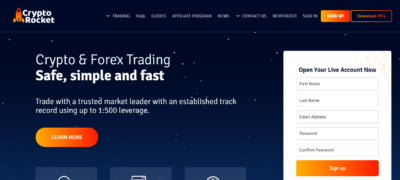+86-(0)768-6925905
Contents
Any investment program involves certain risks, including loss of principal, and no assurance can be given that any specific investment objective will be achieved. Investors who are considering either of these financial products should make their decisions based on criteria other than whether they want to involve a broker in the transaction. An index fund’s or an ETF’s underlying character is much more critical. Likewise, investors can find ETFs that track everything from industry sectors to foreign exchange markets and beyond. Exchange-traded funds and mutual funds are simply structures or vehicles that facilitate access to underlying investments.
When an index fund investor wants to redeem an investment, the index fund may have to sell stocks it owns for cash to pay the investor for the shares. You can invest in an ETF by buying as little as one share, which used to be the easiest way to start investing with very little capital. Several fund managers have lowered their minimum investments for their most popular index funds, so these days you can get started with a relatively small amount of money. The following table shows the minimum investments for S&P 500 mutual funds from three leading asset managers. Investments in small and/or midsize companies increase the risk of greater price fluctuations.
An exchange traded fund, or ETF, is a type of security that tracks an underlying asset. However, when an ETF pays a dividend, you’ll need to use the proceeds to buy more shares, incurring additional commissions and spending time logging into your account to make a quick trade. Some brokers may offer an automatic dividend reinvestment plan on a limited set of ETFs. With a mutual fund, you buy and sell based on dollars, not market price or shares.
“Ultimately, what’s most important is your net take-home,” says Titan’s DeYonker. Mutual funds are subject to market, exchange rate, political, credit, interest rate, and prepayment risks, which vary depending on the type of mutual fund. How much time are you willing to spend on monitoring your portfolio? How much effort do you want to put into enhancing your investing acumen? Let these answers guide you as you compare ETFs and mutual funds.

And because ETF investors are taxed only when they sell the investment, they may realize tax savings compared to a mutual fund. Index funds, on the other hand, must buy and sell assets to adjust their portfolio to track the underlying index. The cost of any capital gains taxes from these sales are taken out of the fund portfolio NAV, which impacts the value of your index fund shares. That said, index fund holdings rarely change, so this may not be a huge issue for you.
Generally less efficient due to higher turnover – greater potential for capital gains due to a larger number of purchases and sells by active managers. Generally more efficient due to lower turnover – index tracking tends to result in fewer purchases and sells, lowering the potential elliott wave analysis software for capital gains. If you make regular deposits—for example, you use dollar-cost averaging—a no-load index mutual fund can be a cost-effective option, and it allows you to fully invest the same dollar amount each time . What does that mean for your investment in an index fund or ETF?
Index funds and index ETFs generally have much lower expense ratios than actively managed funds. The Investment Company Institute’s latest survey of expense ratios looked at the average expense ratios of actively managed equity mutual funds versus index equity funds and index equity ETFs. They can be bought and sold on an open exchange, just like regular stocks, as opposed to mutual funds, which are only priced at the end of the day. ETFs and mutual funds are both pooled investments with their own advantages and disadvantages. With a mutual fund, you own shares of the included investments. With an ETF, you have exposure to the assets, but you don’t actually own shares of the underlying assets.
ETF Pros
Your minimum investment requirements are generally lower than mutual funds. A 2021 study by S&P Dow Jones Indicesfound that in 16 of the 18 categories tracking U.S. equities-focused funds, more than half the funds underperformed their benchmark. In particular, 98.6% of large-cap growth funds failed to beat theS&P 500 Growth index, making it the worst performing of any U.S. equities category in the past 21 years.

When this sale is for a gain, the net gains are passed on to every investor with shares in the fund, meaning you could owe capital gains taxes without ever selling a single share. The investing information provided on this page is for educational purposes only. NerdWallet does not offer advisory or brokerage services, nor does it recommend or advise investors to buy or sell particular stocks, securities or other investments. Compared to value investing, index fund investing is considered by financial experts as a rather passive investment strategy. Both of these types of investments are considered to be conservative, long-term strategies.
Why Index ETFs Are Better Than Traditional Index Mutual Funds
Titan’s investment advisory services are available only to residents of the United States in jurisdictions where Titan is registered. Nothing on this website should be considered an offer, solicitation of an offer, or advice to buy or sell securities. Any historical returns, expected returns, or probability projections are hypothetical in nature and may not reflect actual future performance.
This is generally used when you want to minimize your losses but aren’t able to stay on top of minute-to-minute changes in an ETF’s market price. When buying ETF shares, you’d typically set your stop price above the current market price (think “don’t buy too high”). When selling ETF shares, you’d typically trading dax futures set your limit below the current market price (think “don’t sell too low”). When buying ETF shares, you’d typically set your limit below the current market price (think “buy low”). When selling ETF shares, you’d typically set your limit above the current market price (think “sell high”).
NerdWallet, Inc. is an independent publisher and comparison service, not an investment advisor. Its articles, interactive tools and other content are provided to you for free, as self-help tools and for informational purposes only. NerdWallet does not and cannot guarantee the accuracy or applicability of any information in regard to your individual circumstances. Examples are hypothetical, and we encourage you to seek personalized advice from qualified professionals regarding specific investment issues. Our estimates are based on past market performance, and past performance is not a guarantee of future performance.
- Some ETFs may involve international risk, currency risk, commodity risk, and interest rate risk.
- Growth stocks may be more susceptible to earnings disappointments and the market may not favor growth-style investing.
- The difference between NAV and market price for an ETF won’t ever be very high because institutional arbitrageurs are able to either create or redeem shares of the ETF using the underlying stocks.
- Index ETFs and index funds share some similarities, such as their structure as a basket of securities whose objective is to track a specific stock or bond index.
All regulated investment companies are obliged to distribute portfolio gains to shareholders. Shares of ETFs may be bought and sold throughout the day on the exchange through any brokerage account. Shares are not individually redeemable from an ETF, however, shares may be redeemed directly from an ETF by Authorized Participants, in very large creation/redemption units. The expense ratio represents the operating costs of a fund divided by the average dollar value under management as of the fund’s fiscal year end. The expense ratio is calculated annually and reported in the fund’s prospectus. The largest and most variable part of these costs is usually the fee paid to the fund managers—the “management fee”.
How are ETFs and mutual funds alike?
ETFs are traded on stock exchanges during regular trading hours, while mutual funds are traded just once at the end of each trading day. Most ETFs are passively managed, meaning they simply attempt to track the performance of an index—these are index funds in the form of ETFs. A number of index ETFs track the S&P 500, while others try to mirror other indexes. Still others track the entire U.S. stock market, international markets, and non-stock assets, such as bonds or commodities.
SIDCO is not affiliated with CSIM or Charles Schwab & Co., Inc. . Choose from 2,000+ commission-free listed ETFs1, including Schwab’s low-cost market cap index ETFs. Some markets are “highly efficient”—which means they’re so popular, there isn’t much opportunity to add any real value via active portfolio management. Forbes Advisor adheres to strict editorial integrity standards.
ETFs and index mutual funds can offer a low-cost way to invest in a diversified group of assets. However, passive investing does come with risks, and index funds will mirror equity research financial modeling market declines as well as gains. Like virtually all mutual funds, index funds have certain minimum investment thresholds, typically a few thousand dollars or more.
What is Financial Investing? | Financial Investing Explained
Enthusiasts refer to ETFs as modernized mutual funds—even calling them mutual funds 2.0. Meanwhile, detractors cite the shortfalls of ETFs and tout mutual funds as king. Cutting through the confusion is really just a matter of understanding the differences, and understanding where each structure makes the most sense. Putting money into any market-based investment such as stocks or bonds means that investors could lose it all if the company or government issuing the security runs into severe trouble. However, the situation is a bit different for index funds because they’re often so diversified. Index funds are popular with investors because they promise ownership of a wide variety of stocks, greater diversification and lower risk – usually all at a low cost.
Stay informed on the most impactful business and financial news with analysis from our team
This in itself is a major advantage offered by mutual funds; one that is largely absent in ETFs, and one that may be appealing to investors who prefer a more hands-off approach to investing. The price you pay is based on the market value of the stocks and/or bonds the fund holds at the end of each trading day. Lower expense ratios can provide a slight edge in returns over index funds for an investor, at least in theory. ETFs can have higher trading costs, however, depending on the brokerage you use. An ETF can be passively managed, or it can be actively managed. ETFs that are actively managed are made up of assets chosen by the fund manager, who creates and puts together the ETF and may adjust which stocks it buys and holds based on the market.
